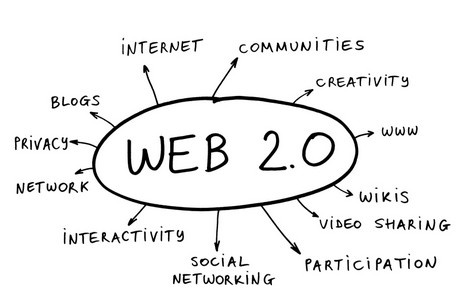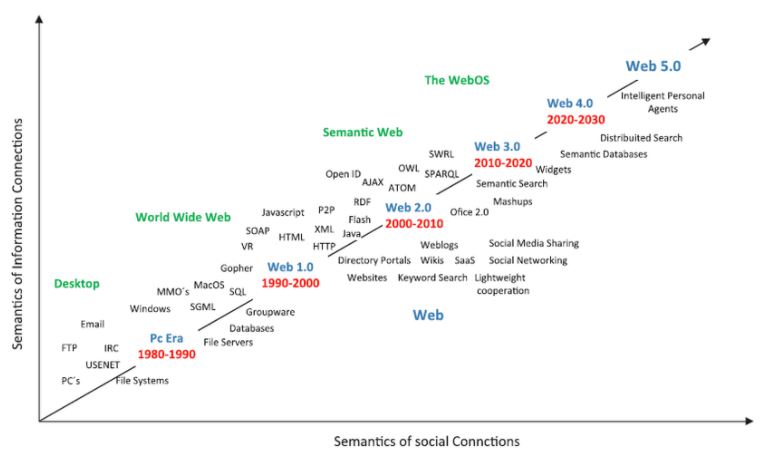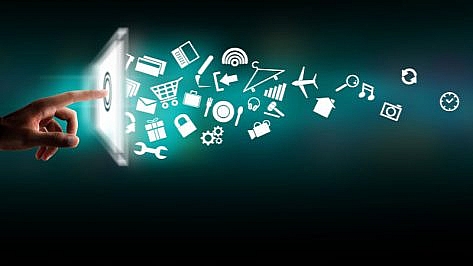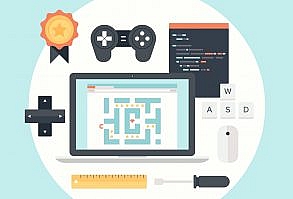World Wide Web (WWW) is defined as a system of interlinked hypertext documents accessed via the internet. Anyone who has internet connection can see web pages which involve multimedia tools such as text, images or videos. The proposal of Tim Berners-Lee in 1989 and Robert Cailliau, a computer scientist was to use hypertext to integrate information into a web as nodes where users can view. In this way, World Wide Web was designed as the first web service.

Web 1.0
Web 1.0 was coined by Tim Berners-Lee as “read only” web. It is the first generation of WWW and lasted between 1989 and 2005. Internet users were only reading information presented to them. It was not as dynamic, vivid and interactive as the web we use now. The primary aim of the websites was to make information public for anyone, and set up an online presence. In other words, the focus was on content delivery rather than interaction and production.
Web 2.0
Web 2.0 is described as the wisdom, people-centric, participative, and read- write web. Unlike 1.0 version, Web 2.0 allows more control to users and provides inteaction. Dale Dougherty working as the vice president of O’Reilly Media delivered a speech about Web 2.0 in a conference, 2004. He defined web 2.0 as follows [1]:
“Web 2.0 is the business revolution in the computer industry caused by the move to the internet as platform, and an attempt to understand the rules for success on that new platform. Chief among those rules is this: Build applications that harness network effects to get better the more people use them.”

Web 3.0
Web 3.0 was suggested by John Markoff as the new kind of web in 2006. It is defined as semantic web and includes integration, automation, discovery, and data. It encourages mobility and globalization.
Web 3.0 is also described as the intelligent semantic web. It allows users to find, share and combine more easily. The semantic web allows a person or a computer to start off in one database, and then move through an unending set of databases. The goal of linked data is to enable computers to do more useful work for us by teaching machines to read web pages.
Tim Berners-Lee explains semantic web as [2]:
“If HTML and the Web made all the online documents look like one huge book, RDF, schema, and inference langugages will make all the data in the world look like on huge database”.

Web 4.0
Web 4 is “based on wireless communication (mobile devices or computer) connecting people and objects whenever and wherever in the physical or virtual world in real time” [3]. The GPS which helps people to find their way is a good example for this type.
Web 5.0
Web 5.0 is still progressing and does not complete its formation however, it is defined as linked, emotive and symbolic web that communicates with humans. In addition, it is based on emotional association with humans. It functions like a personal assistant. Technology and human interaction becomes inseperable. Now, technology cannot understand how humans feel however, there are already some startups like wefeelfine and emotiv that seek to explore human emotion. In this way, they will pave the way for more personalized experince, which will attract more people ever.

Please feel free to contact me if you need any further information.
References
[1] O’Reilly, Definition of Web 2.0. http://radar.oreilly.com/archives/2006/12/web-20-compact definition-tryi.html, 2006
[2] Berners-Lee, Tim; Fischetti, Mark,” Weaving the Web”, Harper San Francisco, chapter 12, ISBN 978-0-06-251587-2, 1999.
[3] Benito-Osorio, D., Peris-Ortiz, M., Armengot, C.R. et al. Web 5.0: the future of emotional competences in higher education. Glob Bus Perspect 1, 274–287 (2013).
[4] http://www.evolutionoftheweb.com/





